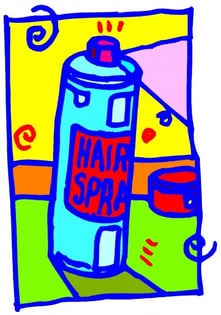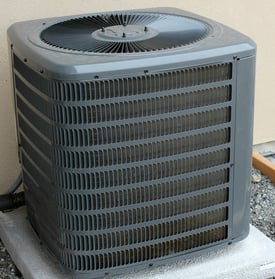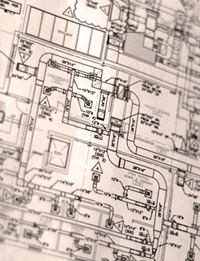The best time is now to replace an old R-22 refrigerant system with an environmentally-friendly alternative.

For better or for worse, we no longer live in the days of hairspray. Our ’do’s style may have suffered slightly, but our environment has benefited greatly. When the Montreal Protocol was signed by the United States in 1987, it set a goal of reducing emissions of ozone depleting chemicals, and it has experienced some success…I hope you all celebrated World Ozone Day this month on September 16th! Many people may be blissfully ignorant of the changes to their aerosol products in the last 30 years thanks to the Montreal Protocol, but in the HVAC/R industry, we’re continually aware.
The families of chemicals most responsible for ozone depletion are called chlorofluorocarbons and hydrochlorofluorocarbons (CFC’s and HCFC’s) which can have lifetimes of 1,000 years and global warming potential values of 14,000 times that of carbon dioxide![1] These chemicals are the primary ingredients in most refrigerants. This means that for each pound of refrigerant that escapes into the atmosphere, it can tap 14,000 times more energy than carbon dioxide does, and it sticks around in our atmosphere for 1,000 years. Yikes! Fortunately, the EPA has enacted SNAP, a program under the Clean Air Act to identify and evaluate substitutes for products that have historically used ozone-depleting substances.[2]
Refrigerant Phase-out
The Montreal Protocol wisely decided that the way to reduce these chemicals is slowly and over time using a phase-out period on these refrigerants and other substances. This sets limits on production and consumption and provides time-based targeted goals, thereby giving affected industries time to come up with and implement better alternatives. The HVAC/R industry was long accustomed to using a refrigerant called R-22, which became subject to phase-out due to its ozone depleting potential. In 2010, production and import of R-22 was limited, and by 2020 only recovered, recycled, or reclaimed supplies of R-22 will be available[3]. There are many refrigeration systems that still utilize R-22, but with the manufacture of new refrigerant stopping, R-22 will become harder and more expensive to use (reclaiming and recycling of R-22 is allowed). Subsequently, building owners who use R-22 systems will find servicing costs rising as re-charging their systems becomes more costly due to the increasing scarcity of R-22. But fear not: there’s no reason to be frustrated by these facts. There are solutions that have been developed to allow building owners to keep their equipment and merely replace their ozone-harming refrigerant with an EPA approved alternative. R-407C is a suitable option due to its relatively simple replacement in most R-22 systems, its zero ODP and comparable GWP, and similar performance to R-22[4].
R-407C replacement in R-22 systems
R-407C has such similar properties to R-22 that its replacement is nearly as straightforward as recharging an R-22 system with R-407C. However, there ARE key differences and considerations to attend to before making the switch. First, it’s important to work with a contractor who has experience with retrofitting R-22 systems with R-407C, as they can help ensure that every aspect of the existing R-22 system will be compatible with R-407C. A few key considerations a qualified contractor will use to ensure a smooth refrigerant changeover are as follows:
- Verifying compressor compatibility
- Making sure the correct lubricant is used and adding the appropriate lubricant drier
- Checking the superheat settings for the thermal expansion valve
- Ensuring high pressure safety controls are adjusted for R-407C
- Adjusting any pressure regulators and solenoid valves for a higher system pressure drop with R-407C
It is always important to consult the manufacturer of the equipment being switched from R-22 to R-407C as they will know which parts are available and necessary to make the switch to R-407C[5].
Conclusion
If you are a building owner who has an existing R-22 refrigeration system, it may be prudent to consider retrofitting your system with an EPA SNAP approved alternative to save money now and before the 2020 production-halt date causes R-22 prices to rise further[6]. While keeping in mind that every system is different and there are a few things to consider before converting, R-407C is one of the best substitutes in terms of overall performance and compatibility. With increasing costs to recharge R-22 systems, high first costs for a replacement system, and the harm R-22 causes to the ozone layer, the best time to consider a switch is now. When you are considering a refrigeration system upgrade or other changes to building energy systems, consider reaching out to CX Associates for what we may be able to do for you.
[1] https://www.epa.gov/ozone-layer-protection/ozone-depleting-substances
[2] https://www.epa.gov/snap/overview-snap
[3] https://www.epa.gov/sites/production/files/2015-07/documents/phasing_out_hcfc_refrigerants_to_protect_the_ozone_layer.pdf
[4] https://www.sciencedirect.com/science/article/pii/S1876610217300541
[5] http://www.altairpartnerslp.com/data/Refrigerant-Changeover-Guide-R22-R-407C.pdf; http://www.air-innovations.nl/web/pdf/GUIDELINES-FOR-UTILIZATION-OF-R407C.pdf
[6] https://www.epa.gov/snap/substitutes-residential-and-light-commercial-air-conditioning-and-heat-pumps


